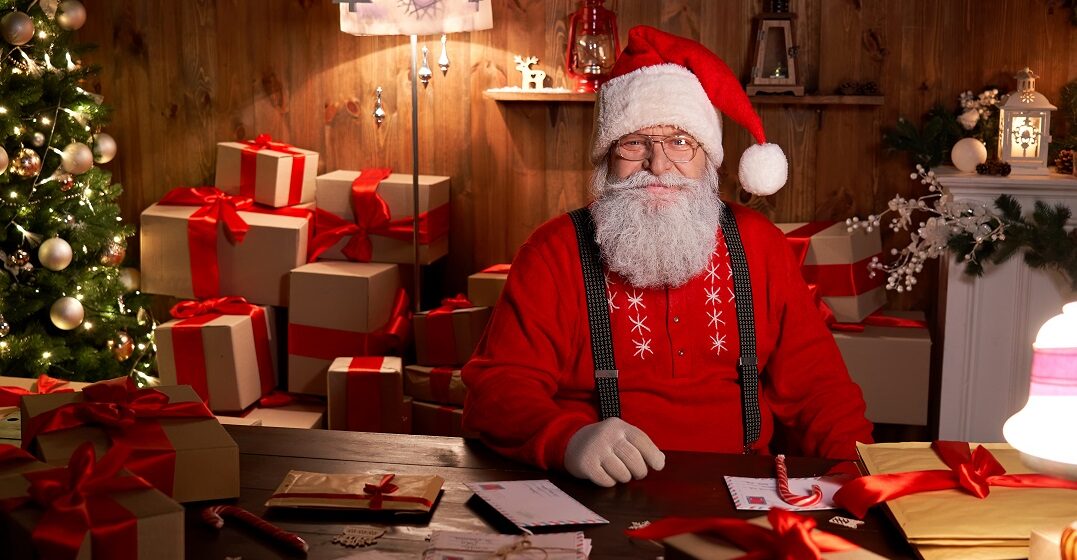by Laura Jones
Updated on January 3, 2024
Is Santa Claus Santa’s real name? When we hear Santa Claus, most of us immediately think of the jolly, bearded man in a red suit, delivering presents from a reindeer-pulled sleigh. But, Santa Claus is the name mainly used in the US for Christmas’s most beloved figure. So what is Santa called in England? Or how about in Germany or France?
Santa’s full name is Saint Nicholas. The ancestor of the modern, American Santa Claus, Saint Nicholas was a bishop born in the Mediterranean during the fourth century CE. He went through several transformations to become what we know as Santa Claus, not least moving to the North Pole, though his name lives on in various forms. St Nicholas’ Day is on December 6 and is celebrated in many countries. “Jolly Old Saint Nicholas” is a famous Christmas song for children. So, was Santa Claus real? Sort of, yes.
In England, Australia and New Zealand, people use Father Christmas and Santa Claus interchangeably. Father Christmas comes down the chimney on Christmas Eve to deliver presents for children to open on December 25. It’s common for children in the UK to leave a mince pie and a glass of whiskey (or whatever their parents like to drink) as a thank-you to Father Christmas, as well as a carrot for the reindeer.
While Santa Claus is by far the most common term in the US and Canada, some people also call him Kris Kringle, from the German Christkind (Christ child). Kris Kringle is also the name of the main character in one of the most famous Christmas movies of all time, “Miracle on 34th Street.”
In some parts of Germany, der Weihnachtsmann (literally, Christmas man), brings presents to children on December 24. In other parts of Germany, presents are brought by das Christkind (the Christ child). Nikolaustag, St Nicholas’ Day, is celebrated on December 6 and children receive small presents then too, though on that day the presents come from Sankt Nikolaus.
In France, Santa Claus is called Père Noël (Father Christmas) and is accompanied, at least traditionally, by Le Père Fouettard, who punishes naughty children. St Nicholas’ Day is also celebrated in France, and children receive sweets.
Similarly to France, Spain has Papá Noel (Father Christmas), who brings gifts to children on Christmas Eve. Epiphany, on January 6, is also an important holiday in Spain. On this day, children get more presents from the Tres Reyes Magos – the Three Kings. Traditions are similar in the wider Spanish-speaking world, but in Mexico, for example, presents might come from Santo Clós, while in Chile, children wait for Viejito Pascuero (Old Man Christmas).
Over in Switzerland, Santa Claus is called Samichlaus and visits well-behaved children on December 6, giving out chocolate, nuts and mandarins. Unlike in America, Samichlaus walks in the front door in Switzerland and gives children, and sometimes adults, a short, often humorous report on their behavior for the year. Children can then recite a short poem to try to get more goodies out of Samichlaus.
In the Netherlands, Santa Claus is called Sinterklaas. As there were a huge number of Dutch immigrants in the early United States, we have them to thank for popularizing the term Santa Claus, an anglicized version of Sinterklaas. Sinterklaas day in the Netherlands is on December 6, and children leave shoes outside for sweets to be left in.
We can’t talk about Santa Claus without mentioning his present home base, Finland. In Finland, Santa Claus is referred to as Joulupukki, which translates literally as Christmas Goat, or Yule Goat. Originally, the gift-giver was a rather scary goat but is now a man who is much the same as Santa Claus in the USA, even down to the reindeer.
Most people know her simply as Mrs. Claus and that’s probably how it’s going to stay with her husband hogging the limelight. However, several films and books have named her, and the most widely known name is Jessica, given to her in the movie “Santa Claus Is Comin’ to Town.” Other people think she’s called Mary (as in Mary (merry) Christmas).
Santa’s real name is Saint Nicholas, and in many countries, he’s still called that, including in Germany, where Sankt Nikolaus still visits children. The name Saint Nicholas has morphed into Santa Claus and that has become the most widespread name for Santa. However, iterations of Father Christmas in various languages make that another popular name for him.
